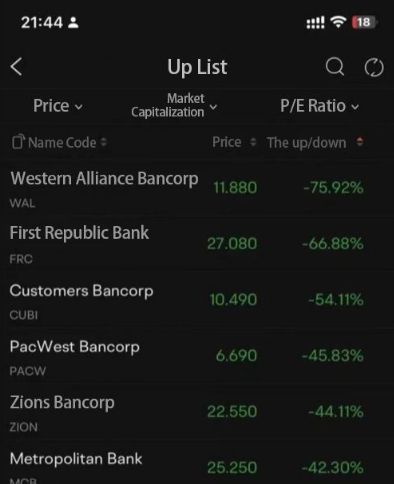Safety is spending money you can see to avoid things you can’t see at the moment, but that will cost you dearly if they happen.

Sooner or later, the alarm bells are going to come.
The Silicon Valley bank collapse caused the U.S. dollar stabilized coin USDC to de-anchor and fall to a low of $0.87 over the weekend, and FUD sentiment spread through the crypto market, awakening circles to the importance of asset security. Taking advantage of the alarming Silicon Valley bank crisis, the FDIC and the Federal Reserve are considering a fund that would enable regulators to provide more deposit guarantees to banks in trouble after the Silicon Valley bank collapse.
As SVB (Silicon Valley Bank) plummeted, DEX (decentralized exchange) saw even more exponential growth in trading activity and fee profit.

According to DeFiLlama data, total DEX trading volume soared to $15.12 billion and fee profit collected by Uniswap reached its highest value since May 10, 2022, with the ratio of aggregated DEX to centralized (CEX) trading volume (a metric reflecting DEX’s market dominance) rising to 26.66%.
Unisap, Curve Finace, and Sushiswap emerged as big winners during a period of market uncertainty, with more and more users abandoning centralized exchanges and exploring self-custody, a trend accelerated by the USDC crisis caused by the collapse of Silicon Valley Bank.
So the future belongs to DEX and DeFi, who will be the unification of security and convenience with centralization? What are the long-term drivers for building a security moat? Let’s read on.
Does the future belong to DEX and DeFi?
With the Federal Reserve announcing a new emergency bank term funding program of March 12 BST and supporting Silicon Valley Bank depositors to access funds on Monday local time, the USD anchor price rebounded and rose to the $0.995 range, having essentially restored the USD anchor and its market cap back above $40 billion.
This shows us that during periods of market uncertainty, even the largest Silicon Valley banks in the private investment banking space need insurance minting mechanisms to protect against black swan events. Just like crypto trading platforms companies like this don’t necessarily need to use Bank of America, but companies that have the backing of the US Federal Insurance Company are quite influential for their clients.
For the crypto community, the decline of centralized entities favors DEX, while DeFi projects with insurance minting compensation mechanisms will be favored by the market.
At the same time, we will find two clear signals from the market.
First, DEX has grown by leaps and bounds over the past 3-4 years, and Toekn Terminal disclosed data showing that the number of active developers on the DEX platform has been growing steadily, indicating that the fundamentals supporting DeFi’s future are positive.

Second, a common feature of crypto communities offering trading, lending and pledge-as-a-service is that they typically require users to self-custody their assets and support liquidity protocol arbitrage, suggesting that decentralization and security and convenience will have become the basic consensus among DeFi players.
In the future, whoever can harmonize security, convenience and decentralization will be the biggest winner!
MiSon: The unification of security and convenience with centralization
As a DEX designed for stablecoin exchange, MiSon, a decentralized smart contract liquidity aggregation service protocol, provides lending services for the top 15 major global coins, in addition to MiSon’s mission to revolutionize the way people access, manage and protect their digital assets by providing decentralized, secure and transparent digital asset management programs and structures.
Potential risk-free rate
The risk-free rate does not include credit risk, maturity risk, etc., and is generally considered in the traditional world to be the short-term Treasury rate, or the level of the benchmark interest rate set by the central bank.
Let’s look at a few of the major interest rates in the crypto market.
- Stable currency borrowing rate
Some investors in the market use the borrowing rates of stablecoins as the risk-free rates in the crypto market. For example, the borrowing rates of USDC and USDT in Aave and Compound.
ETH and others have corresponding lending pools in lending protocols, and the lending rates are very low most of the time. In the case of ETH that exists in Aave, the interest rate level for ETH is at a relatively low level most of the time.
However, the lending of public chain tokens is subject to default risk and liquidity risk, the former is a problem caused by the counterparty of the lending, and the latter is the overall market risk, which is not included in the “risk-free rate”, and therefore the lending rate of this category cannot be used as the “risk-free rate”.
- DeFi field yield
The main sources of MEV are: arbitrage, liquidation, and sandwich attacks. As you can also see from the daily profit of Ether EVM, in a bull market EVM is more, while in a bear market EVM is relatively much less.
Overall, MiSon captures value through multi-protocol aggregation, and the returns obtained include, on the one hand, liquidity arbitrage on lending protocols, and on the other hand, DEX + Ai order flow arbitrage, which is better than the previous two interest rate levels, and the excess return is more in line with the “real return” narrative level “risk-free rate”
Long-term drivers
This bank meltdown has affected not only the U.S. own banking system, but also banking systems in other regions.

Unlike traditional banks, DeFi’s two main risks come from smart contract code and clearing risk, while MiSon has done a good job of risk control on deposits, lending and market making.
- Protocol security
MiSon has innovatively designed and developed the “Minting Coin Compensation Protocol” as equity to allow deposit users to avoid the risk of force majeure during the liquidation process. The MiSon protocol has already achieved stability, but with an additional escort, which is equivalent to a double-layer moat to ensure the robustness of risk control, i.e. the safety of deposit users’ assets is guaranteed.
- Security of funds
Financial security consists of two points.
1) Users’ assets are on smart contracts, and assets are all available on the chain, in line with the spirit of openness and transparency.
2) MiSon’s asset contract code has been audited by CERTIK and is safe and secure.
Therefore, based on these two points, the funds participating in MiSon are safe and secure.
- Lending security
The MiSon protocol captures AAVE, Compound, ETH/USDT, ETH/USDC and other stable protocols when lending to liquid stable coins, so the liquid stable coin lending in the MiSon protocol is stable, safe and highly liquid.
- Market-making security
Three items underpin the security of DEX AI order flow arbitrage.
1) Security of the underlying, i.e. MiSon protocol only selects mainstream value tokens (e.g. ETH/USDT) with very sufficient liquidity when arbitrage is used for DEX AI order flow;
(2) the security of the strategy, MiSon protocol use a high liquidity mainstream currency order flow arbitrage, high liquidity of mainstream goods are the current market top 15 mainstream projects, directly most of the project itself risk excluded.
(3) As evidenced by actual cases, MiSon’s protocol has been tested over a three-year period, through several bull and bear markets, and even during a “black swan event” with great market volatility, our principal was maintained at an annualized return of over 20% APY with no losses.
Sum up
The unification of security and convenience with decentralization will be the main theme in the future. It is like MiSon sowing a seed, and although it has not yet had time to become widely popular, with the growing development of decentralization, DeFi, EVM, profit aggregators, insurance minting compensation and other segments, it may explode with amazing momentum in the near future.
To learn more about MiSon, Visit:
MiSon Official Website: http://mison.finance/#/
Twitter: https://twitter.com/MisonProtocol
Instagram: https://www.instagram.com/MiSonProtocol/
Telegram chat: https://t.me/MiSonProtocolio
Telegram channel: https://t.me/MiSonProtocol
Linktree: https://linktr.ee/misonprotocol











